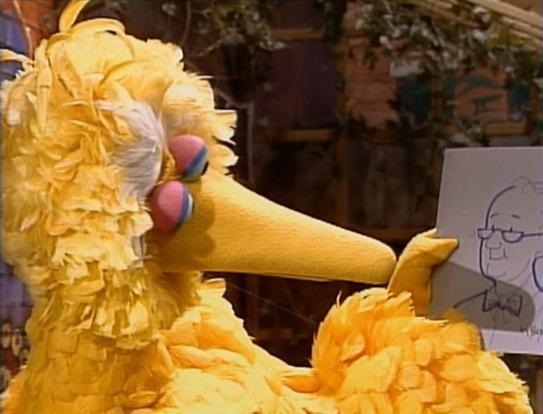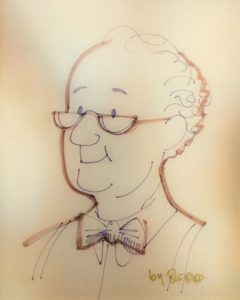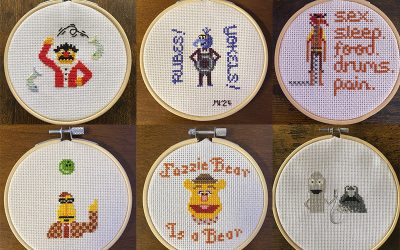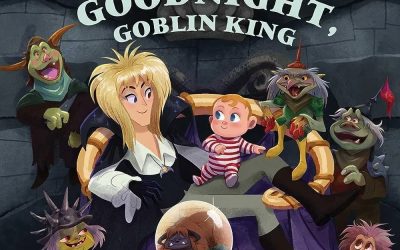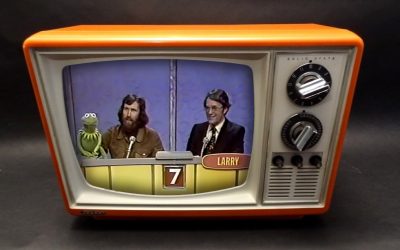Season 15 (November 21, 1983 – May 18, 1984)
From season to season, not many things change significantly on Sesame Street. There are cast shake-ups now and then, Muppets and humans rising and falling in popularity, corners being rounded, etc. And the curriculum goals change as education needs evolve. But for the most part, there is a status quo to Sesame Street that doesn’t often get shaken too hard. Season 15 is a true exception, and quite a large one. This is the season where Sesame Street said goodbye to Mr. Hooper.
In our season reviews here, we often highlight a “Most Valuable Episode” at the end. And to be honest with you, there are some seasons where it’s a huge stretch to pick one out. Okay, most seasons it’s hard to pick one out. There are classic songs and segments both new and old in every season, but the street story plots are often not overly complicated. There are, of course, exceptions to this, and that’s why most seasons you can pick out an MVE. But like I said, a lot of times, we’re really reaching here. Also, because there aren’t too many full episodes available in the wild, it’s tough to watch an episode in its entirety to begin with. But Sesame Street episode 1839 is a highly important episode in the Sesame oeuvre, so today we’re going to do a deep dive on this truly classic episode.
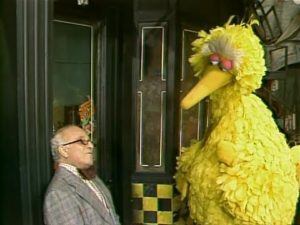 Death is a natural part of life. But for Sesame Street’s target audience, it’s a concept that can be difficult to grasp. And while they may lose a loved one, either familial or friend or pet, a pre-school aged child probably (hopefully) doesn’t have too much experience with death. So when actor Will Lee, who had played Mr. Hooper since the beginning of the show, passed away, the Sesame team seized the opportunity to teach children about death.
Death is a natural part of life. But for Sesame Street’s target audience, it’s a concept that can be difficult to grasp. And while they may lose a loved one, either familial or friend or pet, a pre-school aged child probably (hopefully) doesn’t have too much experience with death. So when actor Will Lee, who had played Mr. Hooper since the beginning of the show, passed away, the Sesame team seized the opportunity to teach children about death.
Halfway through Season 14, Lee taped what turned out to be his final segments as Mr. Hooper. Shortly after he appeared with the rest of the cast in the Macy’s Thanksgiving Day Parade, he died of a heart attack on December 7, 1982, at the age of 74. For the rest of season 14, the stories and characters never remarked on Mr. Hooper’s absence, and pre-taped segments featuring Mr. Hooper were aired. But this was a major character, and one who had been on the show and in children’s homes for years now, so the producers had a tough decision to make about the fate of Mr. Hooper. Big Bird’s performer, Caroll Spinney, said in an interview that “we didn’t know what to do. [We] thought perhaps he could just retire, move to Florida or something, but then the producers thought that the best thing to do would be to actually deal with death.” Eventually, the decision was made to tell the viewers the painful truth: Mr. Hooper died.
The producers put many days of discussion and research into what would become a pivotal episode that would teach its young viewers about dealing with death and that it is okay to grieve and feel sad when a loved one passes away. They consulted with child psychologists and a script was written by Norman Stiles, head writer of Sesame Street at the time, where they made sure to not sugarcoat anything, trusting that the children watching would be smart enough to process everything, and also so that there wouldn’t be any confusion about where Mr. Hooper went. Valeria Lovelace, director of research at the Children’s Television Workshop, said in an interview, “We were advised to take the direct approach… Children don’t understand words like ‘passing away.'”
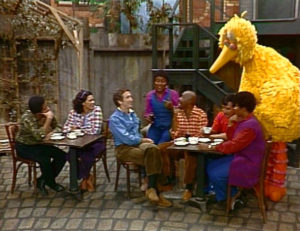 Another important strategy they implemented was that the episode would not discuss the cause of death, or concepts like growing old or even going to the hospital, to avoid additional stress on the children watching. The idea was to shield them from thinking, “Grandma is old, is she gonna die soon?” or “My friend’s dad had a heart attack and he’s in the hospital, is he going to die now?” That attention to detail is what, to me, sets Sesame Street apart from many other shows, especially ones for children – They treat their young audience with so much care and respect in everything they do.
Another important strategy they implemented was that the episode would not discuss the cause of death, or concepts like growing old or even going to the hospital, to avoid additional stress on the children watching. The idea was to shield them from thinking, “Grandma is old, is she gonna die soon?” or “My friend’s dad had a heart attack and he’s in the hospital, is he going to die now?” That attention to detail is what, to me, sets Sesame Street apart from many other shows, especially ones for children – They treat their young audience with so much care and respect in everything they do.
Children, like adults, can grieve in many ways. So through their research, the Sesame team picked out the most common reactions and used them to form the script, using Big Bird as their child surrogate, as they often did in these early years. At first, Big Bird needs reminding from the adults that Mr. Hooper has died, and that means that he won’t be coming back. Death is permanent, he and the viewers learn, and that means that Big Bird can never give Mr. Hooper the drawing of him that he did. He goes through the pain of dealing with the loss of Mr. Hooper all over again, and goes through some of the stages of grief that many people experience after a loss – confusion, shock, feeling alone and abandoned, frustration and anger, sadness and regret – and the amazing part is all of this is done in a matter of minutes by an 8-foot-tall yellow bird. While the emotions here are raw, and these are real tears from actors who knew and loved Will Lee, this scene is a master class in performance from everyone involved. Watch it again (or perhaps for the first time!) and tell me that your heart doesn’t ache for this man, this shopkeeper, this friend – Mr. Hooper.
The episode aired on Thanksgiving Day, 1983, to ensure that the children watching it would be surrounded by plenty of family members and loved ones. Not surprisingly, it was well-received by audiences and critics, and was selected by the Daytime Emmys as being one of the 10 most influential moments in daytime television. It garnered a huge amount of press, and plenty of positive feedback from viewers and their families who appreciated this conversation-starter about death and loss in a way they could use with their own children. The overall message of the episode is one that lets people know that even if they experience a loss, they will still be cared for and loved, and that your life can be richer for having known someone, even after they’re gone.
Mr. Hooper’s last lesson is one that will live forever.
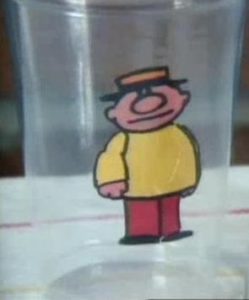 MVM (Most Valuable Muppet): Big Bird – Look at all the emotions coming from a bird with one stuffed wing!
MVM (Most Valuable Muppet): Big Bird – Look at all the emotions coming from a bird with one stuffed wing!
MVH (Most Valuable Human): David – carrying on Mr. Hooper’s legacy as Hooper’s Store experiences its first of many changing of the guards.
Notable Character Debut: Teeny Little Super Guy! Hey, if Sesame Workshop wants to make an awesome product for its 50th anniversary, give me a glass with this guy on it already!
Other Notable Episodes: As Benjamin Franklin once said, “In this world nothing can be said to be certain, except death and computers.” Wait, sorry, that wasn’t Benny Franklin. That was the producers of Sesame Street’s 15th season. These were the educational goals laid out ahead of the season 15 premiere, and they … mostly addressed them. I guess. I mean, death for sure! And kind-of computers. Like in Episode 1933, where Telly learns how to make grouchy faces on a computer for Oscar. Neat!
I also want to highlight Episode 1949, where David tries to make an egg creme for Gordon “just like Mr. Hooper used to make.” Through practice he gets close, but everyone agrees that while it’s still good, it’ll always be different. Egg cremes may not be many people’s lasting legacies, but it was Mr. Hooper’s, and this story is very sweet.
Classic Sketch Debut: Kermit and Grover are always a great duo, and “Grover’s Health Minute” about teeth is one of the greatest.
Classic Song Debut: Get out the handkerchiefs: It’s “I Don’t Want to Live on the Moon,” a beautiful song that could’ve had its own article.
Musical Highlight: “Proud to be a Cow” – What a weird, wonderful song!
Best Celebrity Moment: Pick any one of Sally Ride’s delightful appearances, you can’t go wrong!
One More Thing: All of the pictures done in the Mr. Hooper episode were done by Caroll Spinney himself. What a talented fella!
Click here to remember Mr. Hooper on the Tough Pigs forum!
by Matt Wilkie

